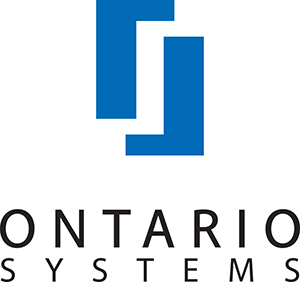Ontario Systems: Helping Healthcare Organizations Realize the Benefits of an Accountable Collections Team

In this Business Profile, Steve Scibetta, vice president and general manager at Ontario Systems, discusses strategies for optimizing the revenue cycle through supportive accounts receivable technology and building an accountable collections team.
How do you help healthcare organizations?
Ontario Systems is a 35-year-old company that continues to innovate in our industries, bringing new solutions forward to the markets we serve. We provide accounts receivable and revenue cycle management technology, software and solutions to help healthcare providers address their biggest business challenges. With increasing out-of-pocket expenses for patients and reductions in payer reimbursements, today’s hospitals and health systems yearn to improve productivity, increase collections and reduce costs. Our data- and analytics-embedded technology helps providers get more done with less by automating aspects of the collections process. It supports greater productivity and accountability for each collection contributor — including those working insurance claims, denials, appeals or balances from patients — and enables supervisors and leaders to track progress and outcomes so contributors can perform at optimal levels. We recognize that providers have complex ecosystems of servers, technology solutions, electronic health records (EHRs) and data. Our product family can serve as an aggregation point for this disparate data, standardize it and then funnel it through workflow, ultimately driving positive business outcomes.
What are some of the biggest challenges you see affecting healthcare organizations?
Sweeping regulatory changes, rising healthcare costs, constricted payer reimbursement and increasing patient responsibility are complicating providers’ collection strategies and shrinking already narrow operating margins. With margins often below 2%, there’s not much room to operate profitably. These challenges are exacerbated when an organization wants to grow to meet changing demands of its community. Like any business, a provider either has to “sell” more services or be more intentional about costs to increase its operating margin.
Finding ways to maximize large investments, such as the EHR and labor, also poses challenges to the healthcare finance community. While organizations are making significant investments in EHRs and onboarding talented people, the technology offered by the industry is often insufficient to support and optimize these resources. This impacts productivity, employee satisfaction and turnover risk, which are costly to the organization. The growing use of work-at-home collectors poses another related challenge in that providers need the right technology and data to support, manage and monitor remote workers.
How does your product or service offering(s) help address these needs?
Ontario Systems empowers healthcare organizations to maximize their technology and talent to reduce costs while increasing productivity and cash flow. Our technology and solutions help providers maximize labor investment and reduce turnover by increasing productivity through our embedded data strategy and supporting and incentivizing staff through on-screen gadgets and dashboards that illustrate progress and promote accountability.
We enable providers to address challenges related to shrinking reimbursements and growing patient out-of-pocket responsibility by maximizing a collector’s time and effort, automating processes whenever possible so staff can focus on the exceptions that require their attention.
Moreover, our technology can help reduce wasted payer hold time on calls by leveraging data and analytics, so collectors can work multiple claims on the current payer call. While the next prioritized payer call is automatically launched, the IVR is automatically navigated and payer hold time is consumed awaiting the target-connect time with the collector. By working the right number of claims per payer call and obtaining significantly more payer connects through the day, productivity significantly increases.
Our cloud-based technology is quick to deploy, integrates with an organization’s existing EHR/ecosystem and promotes accountability, productivity and quality assurance by allowing leaders to monitor staff and implement interventions for process improvement. With the right data, providers can accurately assess performance and identify coaching and training opportunities.
What are some key considerations for healthcare leaders when choosing this type of product or service? Are there key product/service features that people should know about?
To accelerate reimbursement and self-pay collections, a provider should build an accountable collections team comprised of individuals who are focused on generating reimbursement, including those working with insurance, denials, appeals and self-pay collections. When looking for a solution to facilitate and support staff in these roles, the system should leverage data to identify the associate’s priorities based upon their skill set and the day’s assignment. Providers should look for solutions that generate a toolset and dashboard for employees so they can facilitate calls knowledgably, take concise action and move on to the next priority. Technology should also be data-embedded, which flags exception-based issues for the employee’s intervention to maximize their time and effort.
An effective solution should present tips and tricks to staff in order to efficiently guide them through their day. For example, a system should be able to identify when an employee can work through multiple claims on a single call and automatically present that information, in priority order, to the collector. Features like this help the collector comply with policy and training, in addition to being as efficient and productive as possible.
Providers should also look for technology and solutions that enable them to listen to calls in real time or after the fact via recording, allowing them to intervene and improve productivity, quality or compliance. This feature isn’t about getting staff into trouble. It’s about accountability and incentivizing staff to rise to the next level of performance. Many providers are launching intentional quality assurance programs, meeting with associates on a periodic basis and assessing quality and performance through data. With these types of tools, providers can help coach their collectors to be more productive, efficient and successful.
Providers should seek out technology and solutions that help automate certain aspects of collections. For instance, technology that can consume payer hold time while a collector is conducting other calls can reduce downtime from five, ten or fifteen minutes per call to seconds. This maximizes their useful time and boosts productivity.
What advice would you offer to healthcare leaders when choosing among vendors?
Ideally, vendors should be innovative and have tenured experience in the industry, a strong install base and be continually evaluating and adopting new technologies. Their service offerings should be mature, evolving and diverse to meet various business needs. Vendors should also be agile and capable of meeting non-business needs as well, such as moving to the cloud. When choosing a vendor, providers should look for one that partners well and offers contemporary pricing/bundling strategies.
As healthcare organizations implement use of your product or service into their day-to-day operations, what advice would you offer so they can best set themselves up for success?
When implementing one of our products, there’s often a desire within the organization to revisit, rework, redefine its processes and policies. We highly recommend creating a collaborative, executive steering committee that helps assure implementation, goals, objectives and the project’s pace are on track. In addition to the steering committee, the organization should also engage operational leadership to elaborate their goals so that we can then recommend, configure, test and deploy the products in a way that will fulfill that vision.
Are there any educational materials you would like to share to help healthcare providers in these efforts?
For more information about Ontario Systems’ technology and solutions, visit www.ontariosystems.com. For additional resources, including podcasts, webinars and blog articles, as well our latest ebook, The Accountable Collector, please visit our resources page.
About Ontario Systems
Ontario Systems is a leading provider of enterprise revenue cycle management software to the healthcare, accounts receivable management, and government markets. Established in 1980 and headquartered in Muncie, Ind., Ontario Systems offers a full portfolio of leading software platforms, including Artiva RM®, Artiva HCx™, Contact Savvy®, and RevQ®. Ontario Systems’ industry-leading customers include 5 of the 15 largest hospital networks who actively manage over $40 billion in receivables collectively, as well as 8 of the 10 largest ARM companies and more than 100 federal, state and municipal government clients in the U.S.






